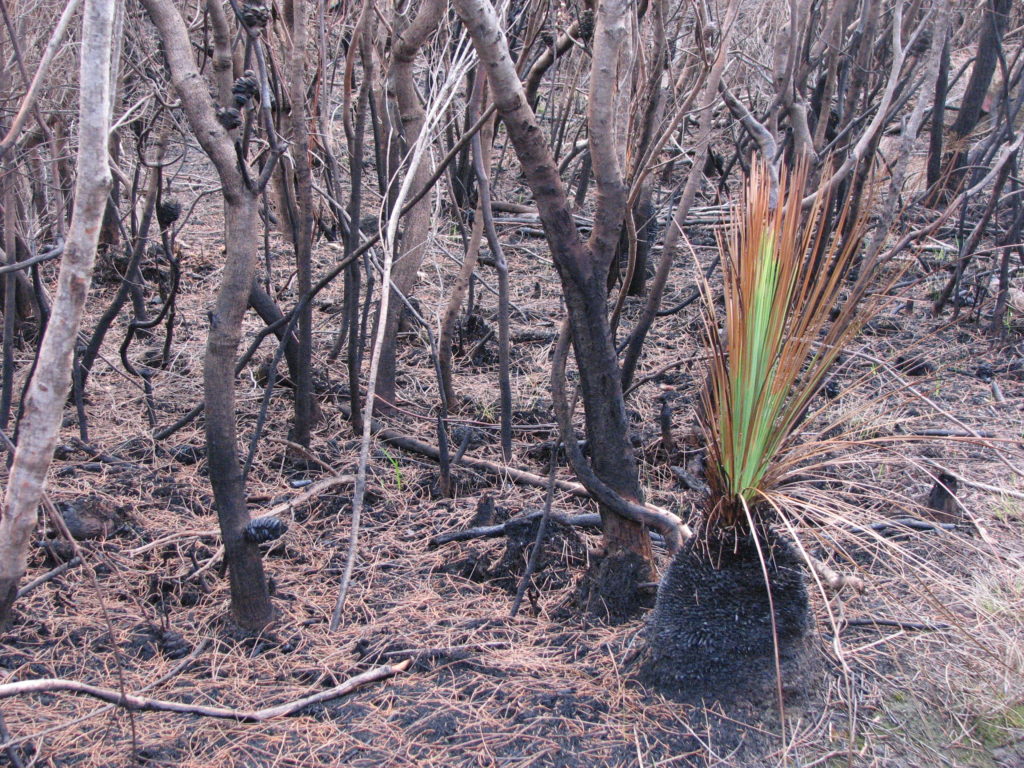
As Sydney continues to be ringed by fire, it seems a good time to repost something I wrote about extreme weather events after the Black Saturday bushfires. I’m with Adam Bandt, now is the time to be talking about climate change, and its impact on the extremes of weather.
John Connor, CEO of the Climate Institute, made a speech today talking about bushfires. I’ve been pondering one of his key points for the last two weeks, ever since the bushfires.
Climate change is not just about warmer weather, it is about wilder weather.
One of the lessons I learned early on as an actuary is that the extremes of any distribution do not behave the same way as the middle. So if the middle of a distribution of temperature rises by 1 degree, the effects on the extremes are not intuitive.
Something that was a 1 in 100 chance of occurring in the old distribution is not just slightly more likely. Moving the distribution up the curve can significantly increase the chance of that 1 in 100 event. For an extreme event that is three deviations away from the mean of a distribution, moving the mean up 20% of a standard deviation doubles the chance of that extreme event. So put it in temperature terms – say the summer mean maximum temperature is 25 degrees, with a 1 in 400 chance of a 40 degree day. Increase the mean maximum temperature to 26 degrees, and there is a 1 in 200 chance of a 40 degree day. And that is assuming that the climate follows a nice stable normal distribution model (or bell curve – the one that statisticians like, because it’s easy to work with mathematically).
You don’t need complex models of extreme weather events following climate change to realise that extreme events become much more frequent if the average temperature moves up a little bit. But complex models of extreme weather events suggest that the extremities move even further than a very simple normal distribution would suggest.
The Climate Institute put out a very detailed report from in September 2007. They first of all looked at the increase in extreme fire danger in the two global warming scenarios – low global warming (0.4 degree by 2020 and 0.7 degrees by 2050) and high global warming (1 degree by 2020 and 2.7 degrees by 2050) – based on projections from the Intergovernmental Panel on Climate Change (IPCC). The number of extreme fire danger days in 2020 in the low global warming scenario increased by 5-25%. And the number in 2050 using the high global warming scenario increased by 100-300%.
They developed two new categories beyond the Australian standard ‘extreme’ fire danger days – ‘very extreme’ and ‘catastrophic’. Catastrophic fire danger days, which at the time of the study had occurred 12 times in the more than 30 years of the temperature records studied at the sites studied, were projected to occur once every three years at 7 of the 26 sites studied, and once every 8 years in 12 more.
Given that the flash point of eucalyptus oil is 49 degrees, bushfire risk does not just increase in a linear way with temperature. The closer the air temperature gets to 49 degrees, the more likely that just some random spark will set something off. The maximum temperature in much of Victoria on Saturday 7 February was around 46 degrees. And there had been little or no rain for the last month, with baking temperatures. Although that weather pattern is quite theoretically possible without global warming, global warming makes it much more likely.
John Connor is right. Time to add Very Extreme and Catastrophic to all those bushfire warning signs you see everywhere in the Australian bush.
